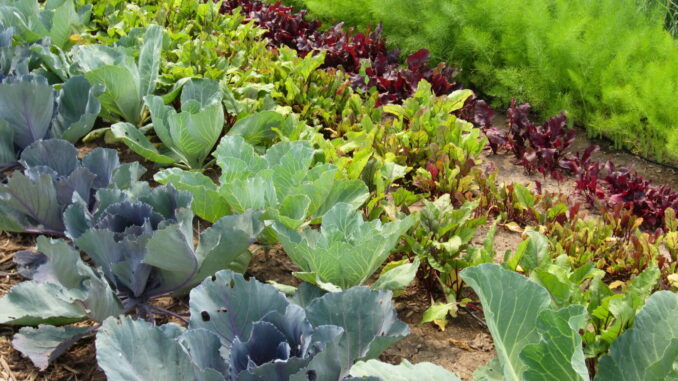

by Kate Watson | Gardens on Spring Creek
As the weather cools and we find ourselves inside more often, it offers us the perfect opportunity to plan for the upcoming growing season. While you may be busy contemplating a spring cover crop, updating your irrigation, or revising your garden layout, it’s never too early to start selecting your veggie varieties. Getting a head start will allow you to order quality seeds before they sell out and decide if you want to grow seedlings yourself or find a source for transplants. Finding the ideal vegetables can be an exciting yet daunting task when faced with dense seed catalogs, trying to determine what will truly work well in your garden versus just looking good on paper. There are many aspects to consider.
With an average growing season of 140 days, the northern Front Range has a relatively short window to grow veggies. Pick varieties with shorter growing seasons, or “days to maturity,” to have the best success and production. The limited season makes it advantageous to use transplants for most Brassicas (broccoli, cabbage, etc.), Alliums (onions, leaks, etc.), peppers, tomatoes, eggplant, and squash. These can be started from seed indoors in the spring or purchased from garden centers and placed in the ground from late April to mid-May when the chance of frost has decreased. Frost cloth can be used to protect against freezing and herbivory until plants have matured and temperatures have warmed. Your season can be extended by utilizing frost cloth in the fall as well. Frost-tolerant plants can be transplanted or directly seeded outside 2-4 weeks before the last frost date and include lettuce, spinach, onions, peas, and many brassicas and root vegetables.
On average, the Fort Collins area receives only 16 inches of precipitation annually, much of which comes as snowfall. It is important to keep a regular and thorough watering schedule throughout the season, especially in our hot, dry summer months. Selecting plant varieties that mention heat/drought tolerance and bolt resistance can be beneficial. Some plants will have better flavor and grow better in cooler temperatures. They include leafy greens, broccoli, peas, and many root vegetables. These should be planted in early spring (~April) for a summer harvest or in late summer (July-August) for a fall harvest. Again, choosing plants with a short time to maturity will help you take best advantage of these transitional growing periods.
When it comes to pests and diseases in your garden, plant selection and growing practices are important for mitigating these nuisances. Certain vegetable varieties are sold as disease-resistant and can help you avoid infection, especially in disease-prone plants such as tomatoes and cucurbits. Planting a range of vegetable varieties, practicing crop rotation, and changing the location of plants and plant families (Solanaceous, Cucurbits, Brassicas, etc.) from year to year can also significantly decrease your risk of severe disease or infestation.
Ultimately, the vegetables you choose to grow should be what you and your family will enjoy eating, and what will provide you with a steady supply of food you’re able to use. Keep this in mind when picking vegetables that will be ready for harvest at different times or in the case of determinate and indeterminate plants (producing all at once or throughout the season). Planning ahead and selecting plants wisely will help you make the most of your time and money and produce an un-beet-able season of growing!
Support Northern Colorado Journalism
Show your support for North Forty News by helping us produce more content. It's a kind and simple gesture that will help us continue to bring more content to you.
BONUS - Donors get a link in their receipt to sign up for our once-per-week instant text messaging alert. Get your e-copy of North Forty News the moment it is released!
Click to Donate
